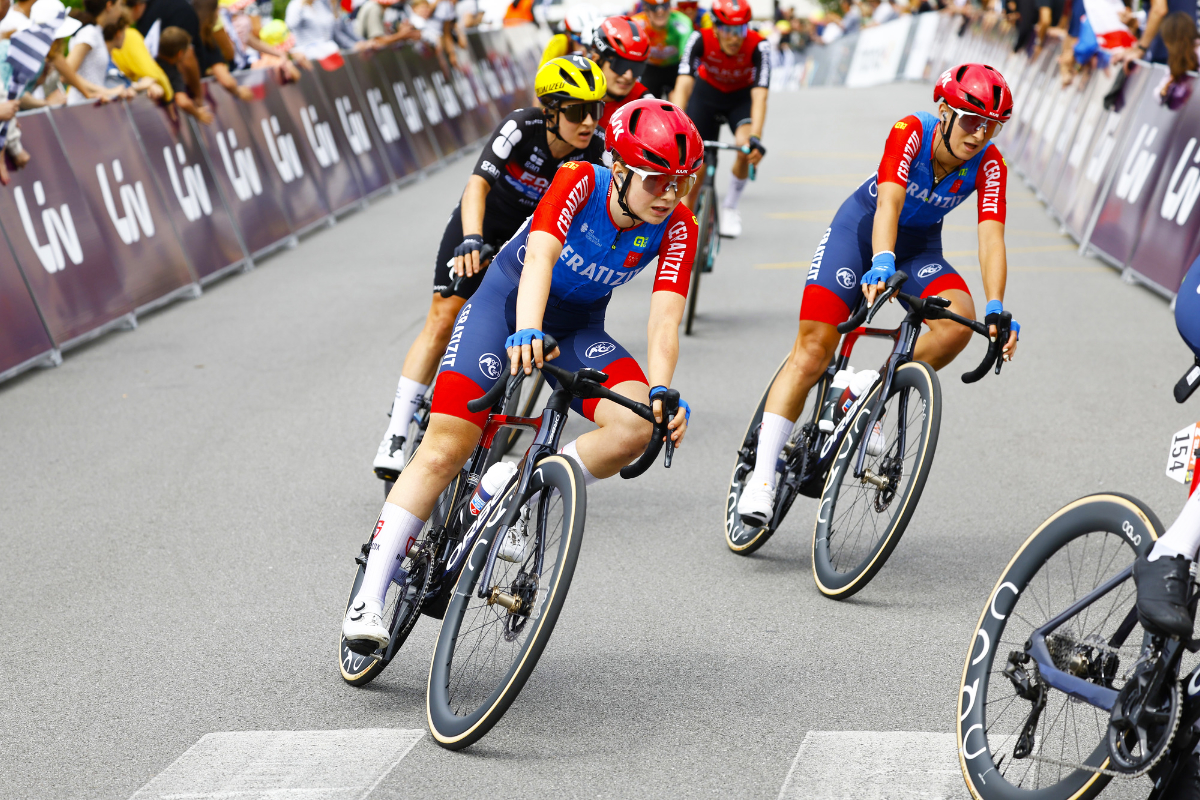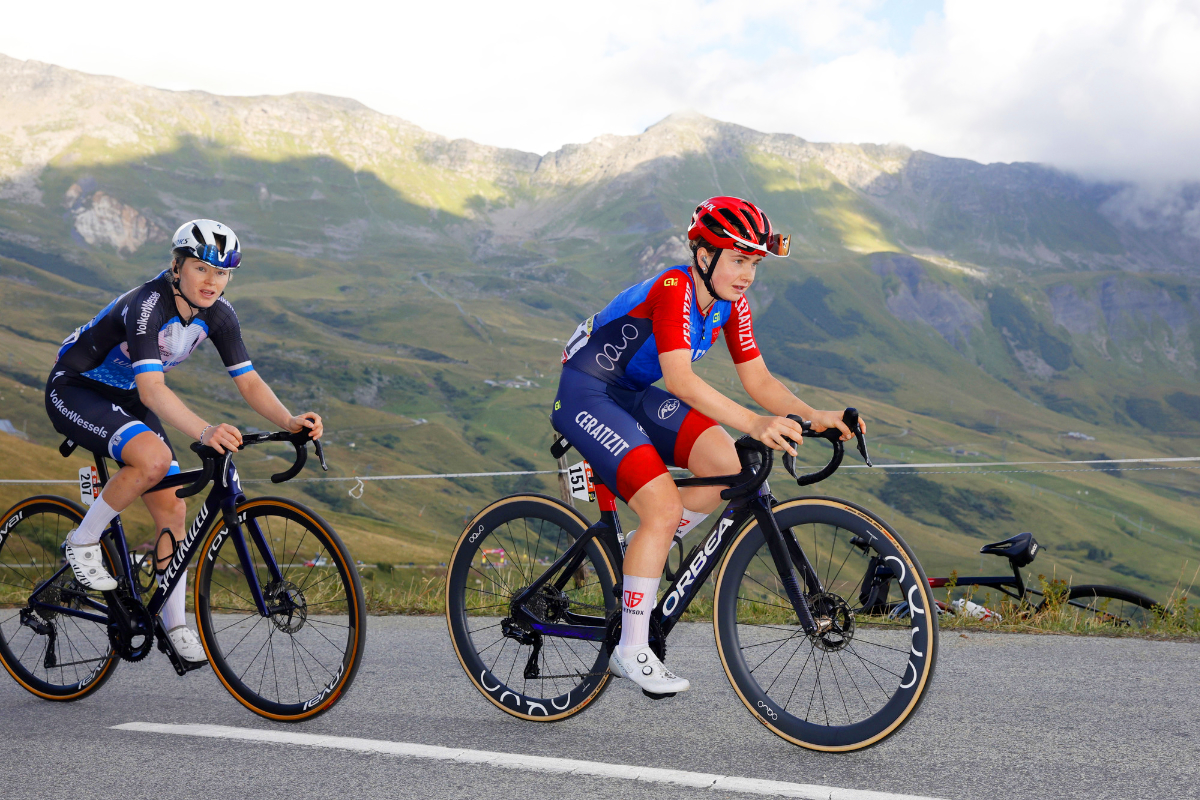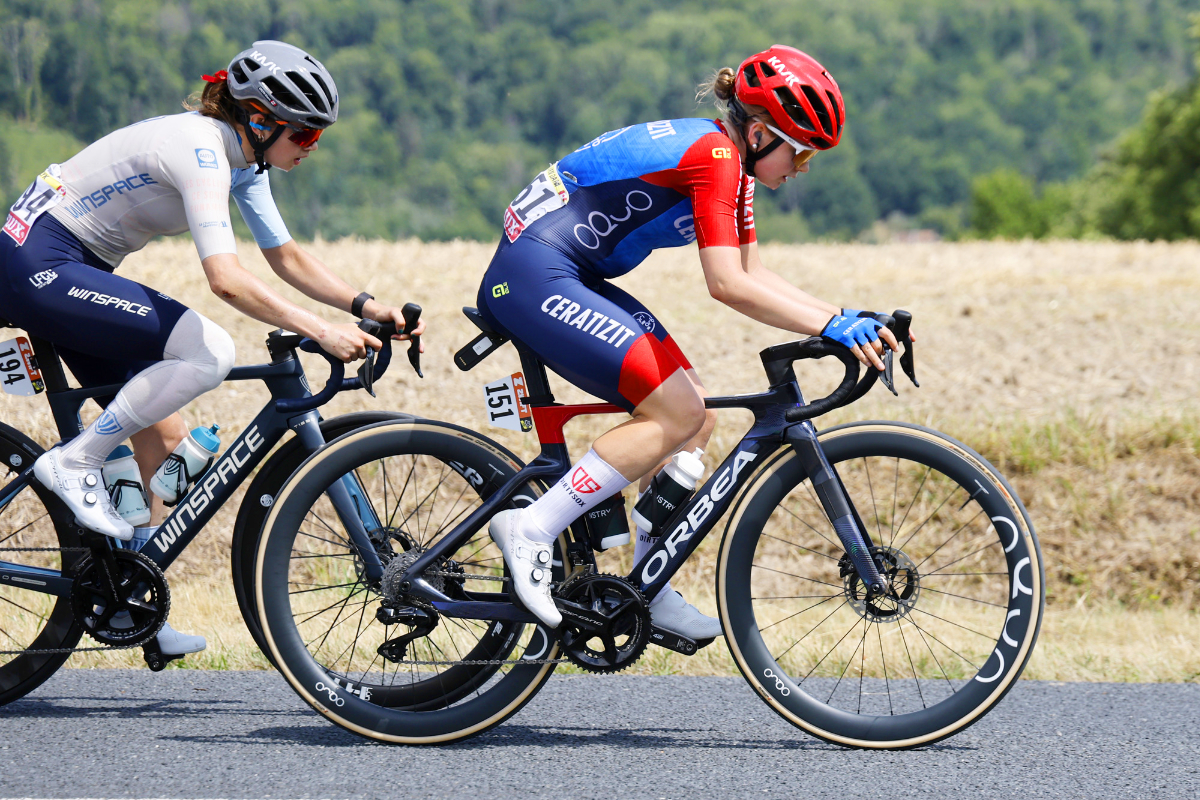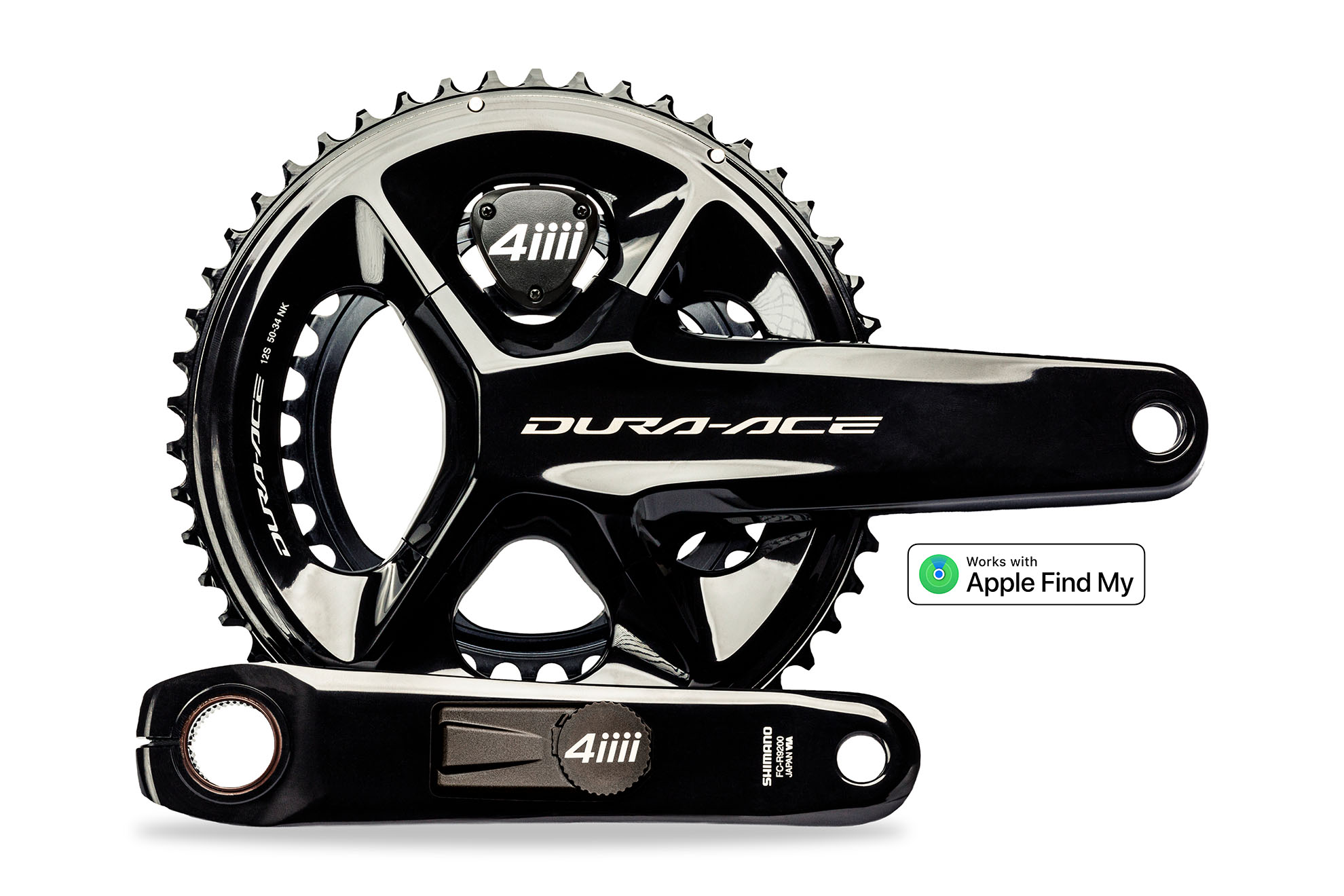Q&A With Sarah Van Dam A Powerful Transition to the WorldTour, Canadian Women on the Rise, and a Successful Tour de France Femmes Debut
Posted by Andrew Davidson / Sarah Van Dam on August 22, 2025
If you’re a fan of bike racing and aren’t already familiar with the name, Sarah Van Dam, you should be - and we’re happy to make the introduction! Sarah is one of several talented young Canadian women making a big splash in the women’s WorldTour peloton this season, the highest level of racing in the sport. In just her first year of racing with her German Ceratizit-WNT WorldTour team, the rapidly ascending 23-year-old has already landed podium results alongside some of the world’s best, like Demi Vollering, as well as notched a top-10 stage result at her debut Tour de France Femmes. Sarah kindly took some time out of her busy training and travelling schedule to answer some questions for us and offer her insight on what has been a near-flawless transition from the boards of the velodrome to some of the most iconic roads in Europe.
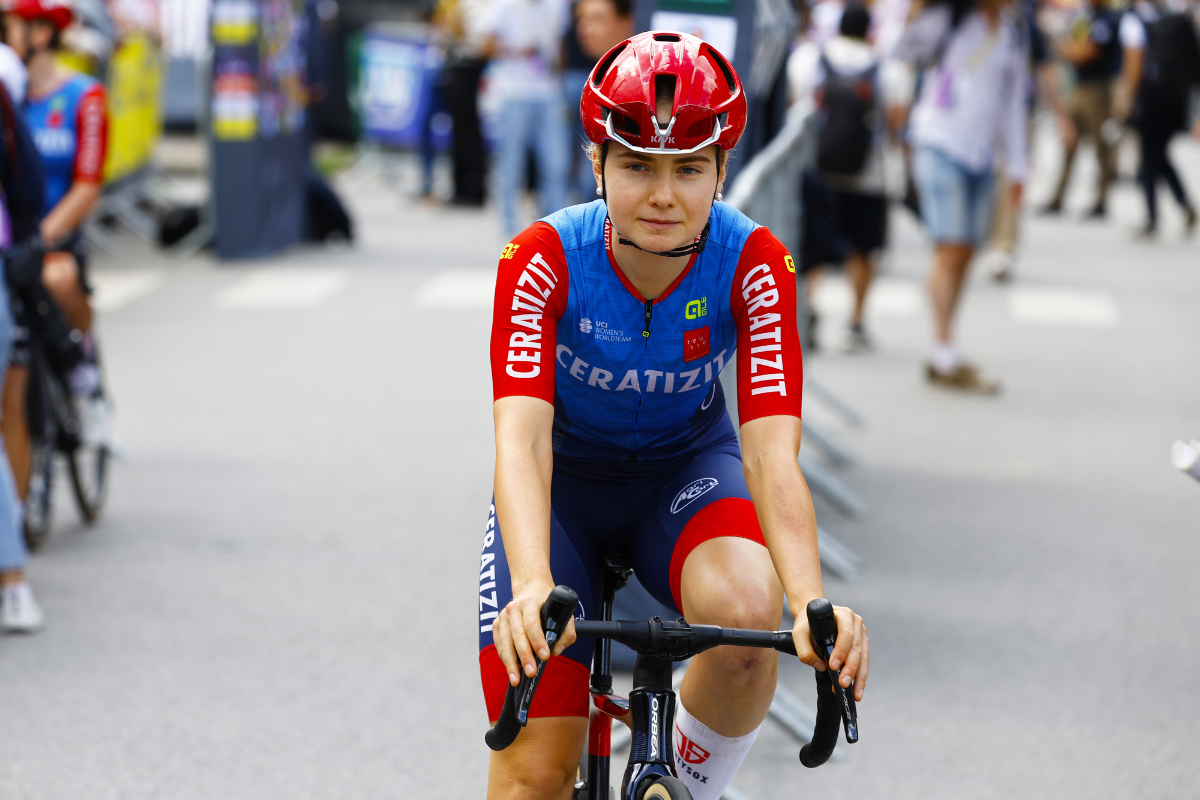
Canadian WorldTour pro Sarah Van Dam, a name you can expect to hear a lot more of in the coming years!
You’ve been successfully balancing track and road racing ambitions for most of (or all of?) your cycling career, competing for Canada on the world stage in both disciplines, and at the Paris Olympics on the track. Having joined the Ceratizit-WNT WorldTour team this season, has your focus shifted to road more exclusively, or will you still be competing on the velodrome in the future? Track riding is the more niche of the two disciplines - for those who’ve never experienced track riding/racing, how would you say the power demands on the velodrome apply to your road racing?
Yes, I would say track has been the main focus of my career up until this season. Balancing both disciplines brings its unique challenges, but I have found it’s becoming more and more challenging to balance the two with their overlapping calendars. After the Olympics, I felt I needed a bit of a break from the track and wanted to shift my focus more fully to the road. This year, there have also been fewer track racing opportunities, and the ones that did come up unfortunately conflicted with my road commitments. That said, I wouldn’t rule out a return to the track in the future, but for now, I’m really enjoying the road, and it’s the first time I’ve committed to it full-time.
Racing on the track has definitely shaped the rider I am. It’s helped develop my power and efficiency, things that transfer well to road racing. Whether it’s in a sprint, a breakaway, or positioning in the bunch, I can feel how these foundations have carried over.
2025 was your first year racing in the WorldTour and you’ve already landed some big results, including 3rd on GC at Itzulia Women stage race, multiple top 5 stage results, 5th on GC at the Tour of Britain, and now a top 10 stage result at the Tour de France Femmes. It seems safe to say the transition to the WorldTour has been pretty successful. What, if any, were some of the learning curves you had to adapt to at this new level and with this new team?
I think one of the biggest challenges for me in transitioning from the North American scene to the World Tour has been positioning in the peloton. There are simply more riders, and everyone wants to be in the same place at the same time, especially going into key moments. It’s been a gradual learning process, and at times it’s been frustrating, because poor positioning can really make or break your race. I’ve learned that I need to be willing to use energy before those critical points just to be in the right spot. One thing I tell myself in those fast, sometimes scary moments is, “Feel the fear, and do it anyway.”
Another adjustment this season has been adapting to the physical and mental demands of a full road calendar. With track as my previous focus, I was used to fewer race days and having more time to prepare for each event. This year has been different, with many more back-to-back race days, different roles, and less time to recover or peak for each specific race.
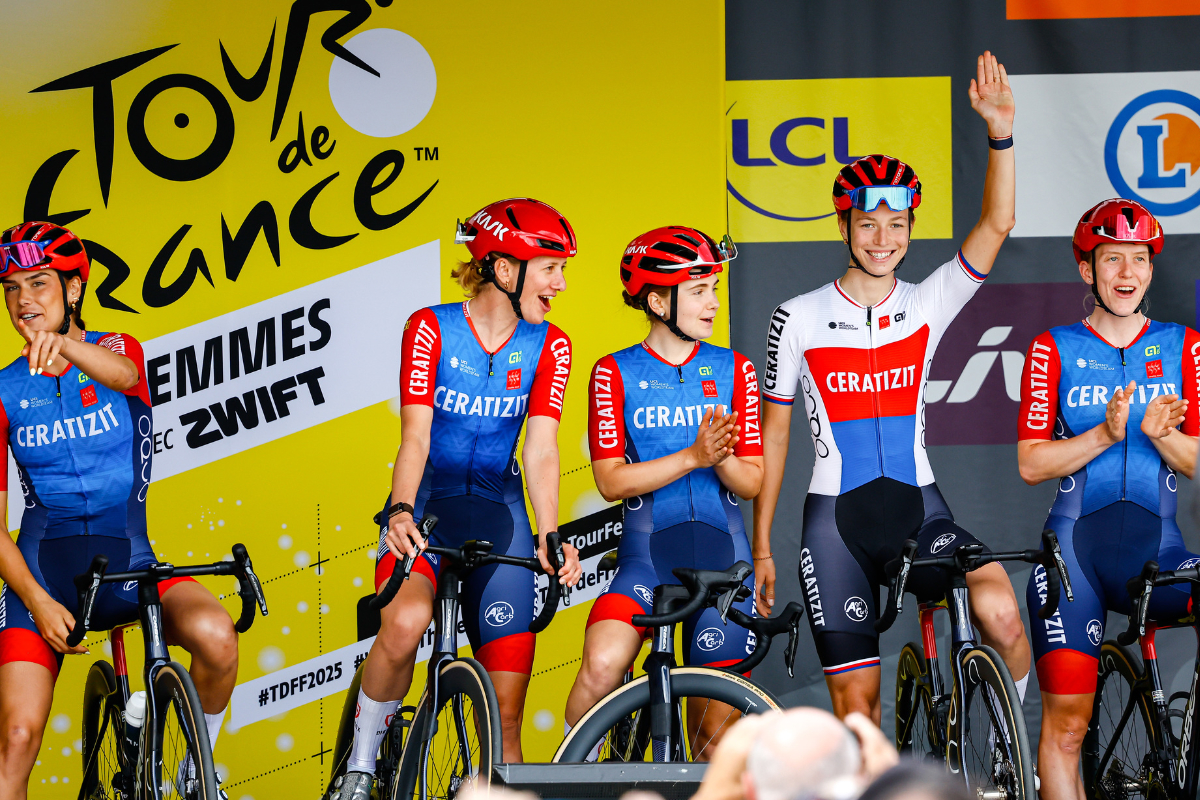
Sarah (center) with her Ceratizit-WNT teammates during the Tour de France Femmes avec Zwift team presentation. The biggest stage any professional road racer can hope to find themselves on in their career.
As with the Olympics, the Tour de France / Tour de France Femmes transcends the sport - people recognize the race as the pinnacle of the sport, whether they’re dedicated cycling fans or not. Had it been a goal of yours to race it, once it became a fixture on the women’s calendar again? When did you find out you were on the team roster for it / what was that experience like finding out that news?
Yes, since the return of the Tour de France Femmes, it’s been a dream of mine to race it. It’s one of those events that transcends the sport—people know what the Tour is, whether they follow cycling or not. At the start of the season, when I sat down with my Sport Directors to discuss the potential race calendar, I saw that both the Giro and the Tour were on the table. At that stage, nothing was confirmed, and there was a long list of riders in contention. I knew selections would depend on how I performed in the first half of the season, so I just stayed focused on one race at a time and controlled what I could control.
It wasn’t until much closer to the race, about a month or so out, that it was confirmed that the plan was for me to race both the Giro and the Tour, and when I found out, I was super excited. I knew it would be a massive challenge, racing two Grand Tours back-to-back with just twelve days between, but I was excited and super motivated by the opportunity. These are the kinds of races you grow up dreaming about, and to be part of them felt really special!
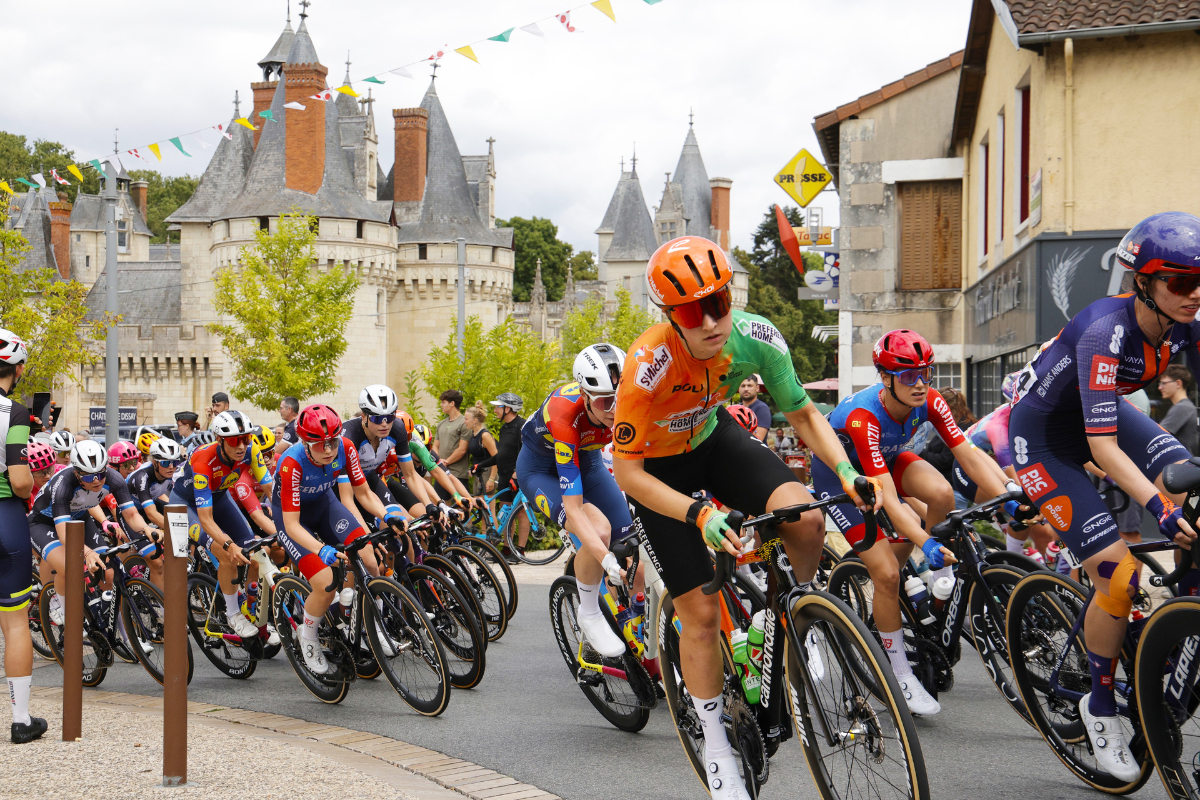
Narrow, winding roads and a constant fight for position - just a day in the life at the Tour de France Femmes.
Canada has a real wave of young talent breaking through on the European road scene currently, particularly with the women. Riders like yourself, Magdeleine Vallieres, Maggie Coles-Lyster, Mara Roldan, Nadia Gontova, Alex Volstad, Jenaya Francis, Anabelle Thomas, among others, have all been producing results in Europe. Is it motivating to see so many Canadians reaching that level? As your generation will surely inspire the next wave of young girls to dream of racing internationally and at the Tour de France Femmes, were there any specific people you looked up to as inspiration for your rise to the top of the sport?
Yes, it’s incredibly exciting to see so many Canadian riders breaking through in Europe right now, especially on the women’s side. This is my first season in the World Tour peloton, and it’s been great to see more and more familiar Canadian faces lining up at races. There’s definitely a wave of momentum building.
I think one of the key changes has been the increased number of national team development projects, especially at the junior level. Riders are getting opportunities to race in Europe at a younger age than before, and that early exposure really helps with the transition to full-time racing here. Hopefully, our generation can show young Canadian riders that it is possible to reach the top of the sport, and that there’s not just one way to get there.
When you look at the current group of Canadian riders, we’ve all taken different paths to this level. I want to say there is no right or wrong way to do it. I think it’s most important to have fun, stay committed, and take the opportunities when they come.
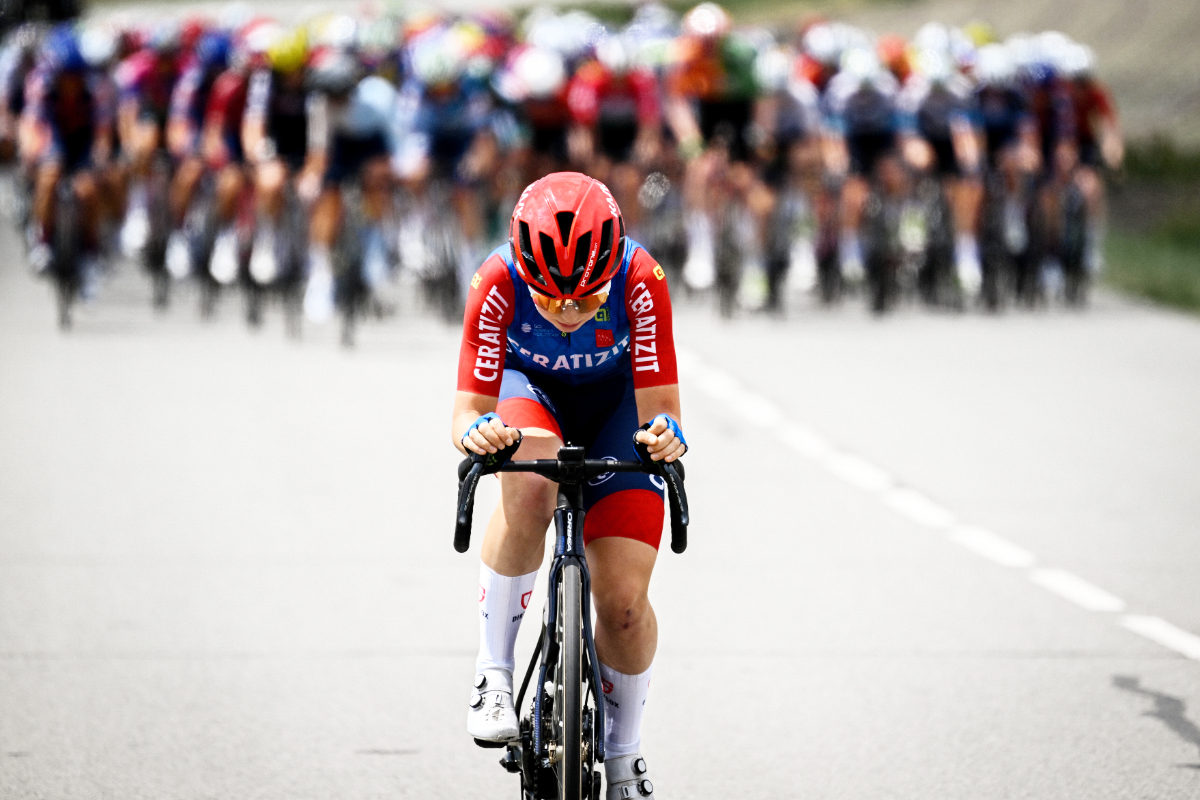
Completing the Giro and the Tour in her first WorldTour season, while adding other big results on the season, Van Dam is quickly making a name for herself in the women’s pro peloton.
You had an amazing result on Stage 4, finishing in Poitiers, sprinting to a 10th place finish in the bunch sprint. How did it feel to get such a strong result at the TdFF in your first attempt? Was that a goal or yours and/or the team to target that stage for yourself?
Stage 4 was a bit of a strange one for me. Early on, I just didn’t feel great. It was one of those days where things didn’t quite click right away, but I started to feel better as the race went on. The finish in Poitiers had a short climb with about three kilometres to go, followed by a long drag to the line. I got boxed in a bit during the final stretch and had to sit up momentarily, but I managed to find a way out and sprint to 10th. It was a solid result, and I’m happy to have been in the mix. That said, I’d be lying if I said I wasn’t a little disappointed—I felt there was potential for more that day. But that’s sprinting: so many decisions happen in a split second. It’s easy to look back and say, ‘I should have done this or that,’ but the real challenge is making the right decision in the moment. I always go back, rewatch the finish, reflect, and take those lessons forward. I’m pretty hard on myself, so it’s nice I have great people around me who ground me and remind me that a top 10 finish at the Tour is still something to be proud of.
The Queen stage of this year’s Tour de France Femmes (Stage 8) featured the hors catégorie Col de la Madeleine, a monstrous 18.6km climb averaging 8.1% gradient. Did you have any team responsibilities on the day, in terms of protecting a climber/GC rider as long as possible? How was your experience on the climb itself - the effort? The roadside fans? The views?
Unfortunately, earlier in the week, our GC rider and main climber had to abandon the race due to illness, so going into Stage 8 we weren’t riding in support of a specific leader. That shifted the dynamic for us a bit and meant we each had to approach the Queen stage in our own way. The Col de la Madeleine is a climb where there’s really no hiding—the legs do the talking. Ideally, we would have liked to be represented in the early break to reach the base ahead of the peloton with the GC favourites, but we missed that move. From there, it was just about settling into a rhythm and steadily climbing up the mountain.
Even though it was a really hard day, it ended up being one of the most memorable moments of the Tour for me. The roadside support was incredible, with fans lining the road, cheering us on, and the views were absolutely stunning. It’s one of those climbs where you suffer 100% but also can’t help but take in the experience. We had a lot of time to soak it all in!
Riders of both the Men’s and Women’s Tour de France often talk about how the atmosphere is palpably more electric and at a whole other level than other races. What was your experience of all the buzz during the race, in terms of media, fanfare, energy in the peloton?
This was definitely an unforgettable experience; it truly felt like the biggest race on the calendar in every way. From the sheer number of fans lining the roads each day to the level of media attention and organization, everything about the Tour had a different energy to it.
The atmosphere in the peloton was noticeably more intense. There was a real nervousness in the bunch, especially in the first half of the race, which unfortunately led to quite a few crashes. I expected that tension to ease after the opening stages, but it actually carried on for several days, partly due to the nature of the courses. Each stage began with a full-gas fight for the breakaway, and the first hour of racing was absolutely relentless.
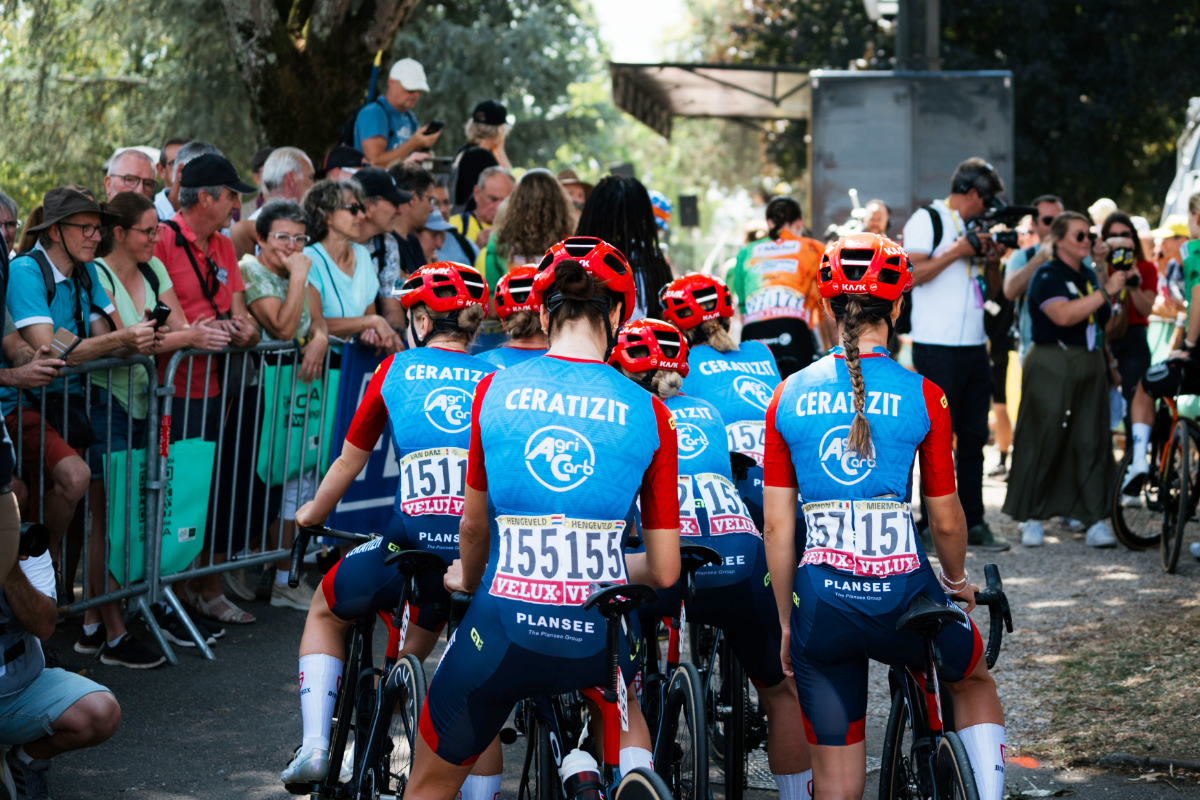
There was no shortage of attention on the riders and teams at this year’s Tour de France Femmes, with the race boasting record television and roadside viewership - a trend we expect to continue.
Going into the Tour de France Femmes, what were some of the teams’ ambitions for the race (stage results, overall GC placement, etc) - and what were some of your personal ambitions for the race? Do you feel like it was a successful first edition for you?
Going into the Tour de France Femmes, our team was focused on targeting stage results. We knew the general classification would come down to the final mountain stages, so our strategy was to take things day by day and create opportunities where possible. Personally, one of my goals was to get into a breakaway during the earlier stages, and while that didn’t happen, I still took a lot away from the experience. It was a tough but rewarding first edition for me, and I’m walking away with valuable lessons, more confidence, and more of a clear idea of where I want to grow as a rider.
The Ceratizit-WNT team, IMO, is one of the best looking and easiest to spot kits in the peloton - in addition to the equally sharp Orbea bikes, equipped with 4iiii power meters. How’s your riding/user experience been with your setup this season?
I’ve been really pleased with the setup this season. It is my first time on an Orbea bike, and it is incredibly responsive and fast, especially on the flats. The 4iiii power meter has been reliable and consistent, giving me the data I need to train effectively and monitor my performance. I really like numbers and analyzing my performance post-training and racing, so having reliable tools is really important to me. It has been great having equipment that not only performs at a high level but also gives you confidence every time you ride.
While I’m sure they are countless, what are a few of the stand-out memories from your debut Tour de France Femmes, whether it be a wildly dressed fan cheering you up a climb, a team pre-race speech on the bus, etc?
One of the biggest stand-out memories from my debut Tour de France Femmes was the sheer number of fans—at the start and finish lines, and all along the roadside. Stage one in particular was unforgettable. Almost the entire route was lined with people, and the finish up Côte de Cadoudal was absolutely buzzing. The noise from the fans banging on the barriers and cheering was deafening—it gave me goosebumps. You think you understand the atmosphere from watching it on TV, but it’s another level experiencing it firsthand. That’s when it really hit me just how massive this race is.
Thanks to Sarah for the generous insights! Be sure to give Sarah and her team a follow so to keep up with their racing exploits:
